At Computex 2023, we got to see an Ampere AmpereOne processor. This is the new processor line from Ampere that is already shipping to select customers. While Ampere is shipping these, it is still hard to find if you do not work at a large customer. For example, if you are a large cloud provider like Microsoft Azure you can get AmpereOne today, but if you are STH evaluating next-gen web hosting options, it will probably take a few more months until they are generally available. Still, we managed to see a chip at the show and get some close-up shots.
Ampere AmpereOne at Computex 2023
The Ampere AmpereOne family sits above the Ampere Altra/ Altra Max family that you have already seen on STH. Altra/ Altra Max are Arm Neoverse N1 designs while AmpereOne is Ampere’s custom core. We expect Ampere to launch a new Banshee part with 12 channels of memory and more at some point in the future, but for now, AmpereOne is going to scale to 192 cores.
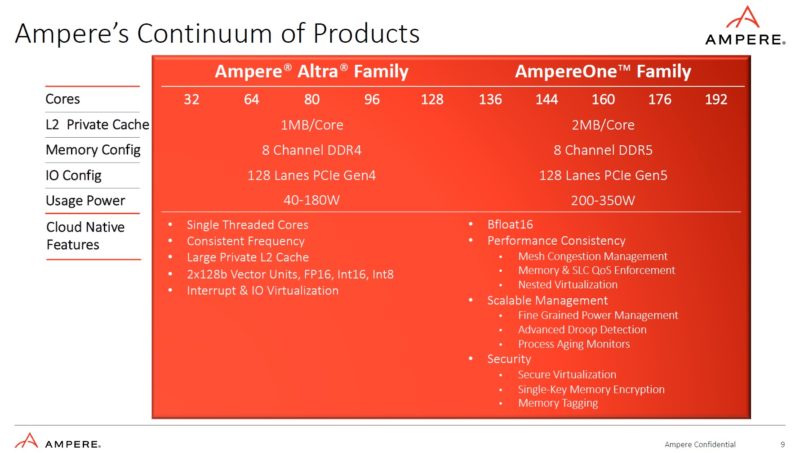
Here is the new chip. This particular model is the Ampere AmpereOne A160-30. Given Ampere’s naming convention, this means it is a 160-core 3.0GHz part.
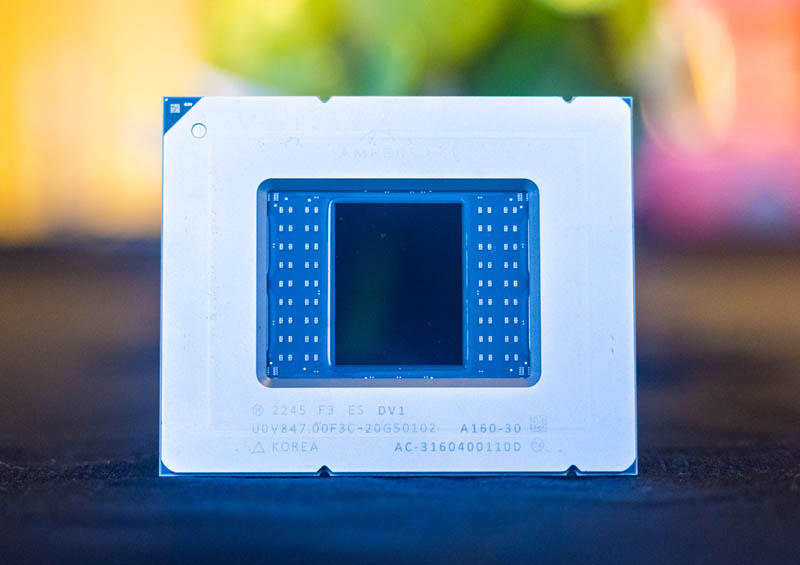
Ampere’s design has a sea of cores in the middle with its I/O tiles for memory and PCIe on the outside. One can think of this as the reverse of what AMD is doing with EPYC and perhaps a bit more similar to what AWS is doing with Graviton3.
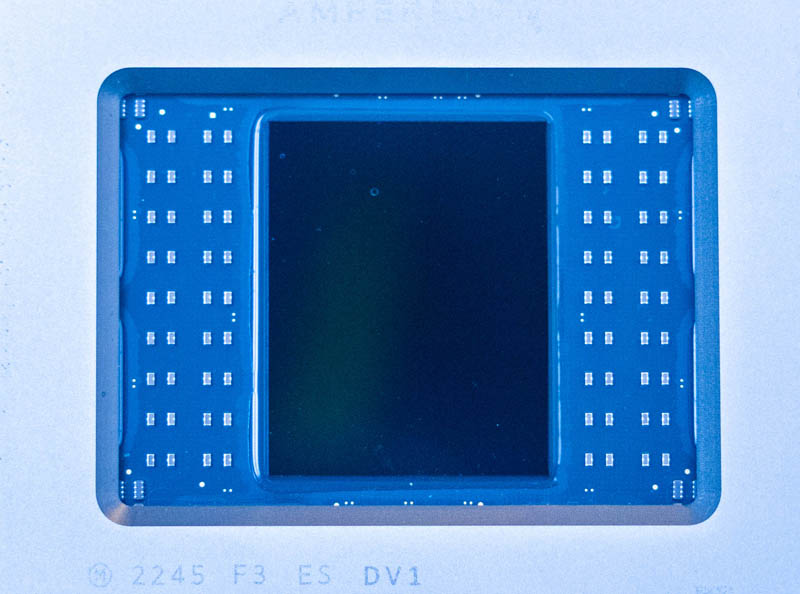
The pad side of the chip looks fairly similar to the Altra/ Altra Max. This is a LGA5964 design.
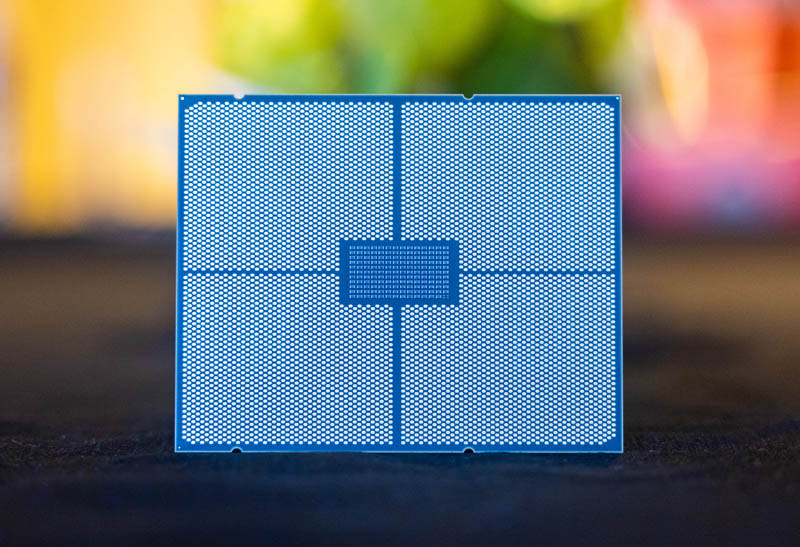
That is a lot of I/O.
Final Words
At Computex 2023 we saw a number of systems from companies like Gigabyte and Supermicro based on AmpereOne. Our team has photos of probably 6-10 new systems at least, and we are still going through the photos and taking more. This is considerably more platforms than we saw launch with the Ampere Altra / Altra Max lines so it seems like the ecosystem is picking up considerably. We even have updates to platforms we have reviewed like the Supermicro ARS-210ME-FNR. One think to keep in mind, however, is that Ampere plans to support Ampere Altra/ Altra Max as the lower-core count and lower power options so AmpereOne should be produced and sold concurrently for higher density and power applications.

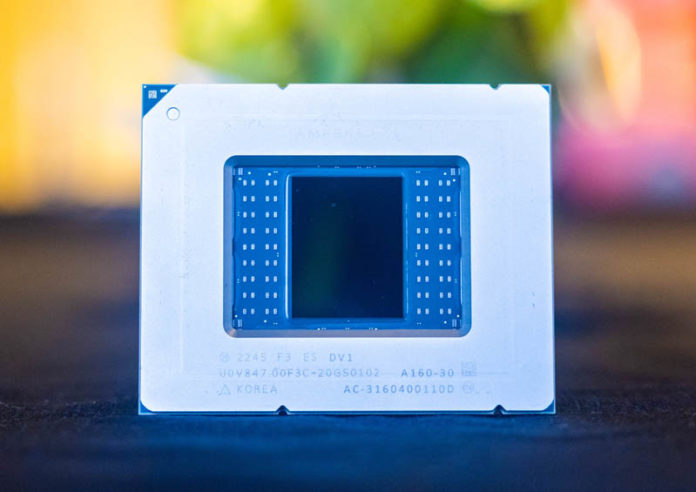



Suggestion: as a tide-me-over till you get a system in house, maybe get a list of customers off Ampere and then tap the customer for a demo of their systems/implementations/use cases? That would whet people’s appetites and keep them hooked till you’ve had a unit of your own to test…
Great article! It’s exciting to see the Ampere AmpereOne processor line making its appearance at Computex 2023. The AmpereOne family seems to be positioned above the Ampere Altra/Altra Max line, with AmpereOne featuring Ampere’s custom core. The scalability of AmpereOne, with the ability to reach up to 192 cores, is certainly impressive.
The close-up shots of the Ampere AmpereOne A160-30 chip provide a glimpse into its design, showcasing a sea of cores in the centre and I/O tiles for memory and PCIe on the outer side. It’s interesting to note the comparison made with AMD’s EPYC and AWS’s Graviton3, highlighting the unique approach Ampere has taken.
The presence of numerous systems based on AmpereOne from companies like Gigabyte and Supermicro is a positive sign for the ecosystem. The fact that there are more platforms launching with AmpereOne compared to the previous Altra/Altra Max lines shows that the technology is gaining traction. It’s also worth mentioning that Ampere intends to continue supporting Ampere Altra/Altra Max for lower-core count and lower power options, while AmpereOne caters to higher density and power applications.
Overall, the Ampere AmpereOne processor line seems to be a promising addition to the market, and it will be interesting to see how it performs once it becomes generally available to a wider range of customers.
Very nice developments indeed. I look forward to the day when I’ll find one of Ampere’s processors on eBay as a used part that I can buy and add to my CPU collection. Also nice is the fact that ARM is expanding out to other classes of system and not staying exclusively locked to mobile and embedded SOCs only. x86 needs some competition, if only for the option for the end consumer to have another choice of architecture to purchase from. I wonder if Microsoft will make a port of Windows that will run on these at some point. It seems like they might eventually have to one day. :-)